State of Data on Kubernetes 2022 Survey Shows Big Payoffs for Kubernetes

8 min read
DoK Has a Transformative Effect
Today, running stateful workloads on Kubernetes isn’t only for early adopters. As Kelsey Hightower notes, “We’ve officially crossed the chasm.” Hightower’s statement corresponds with the growth trajectory of DoK workloads. More than one-half of respondents said they had 50% or more of their data workloads running on Kubernetes, with even more expecting to increase that by 30% in the next 12 months. In addition, almost one-half (40%) of Leading organizations plan to increase their DoK footprint by 50% or more in the next 12 months.
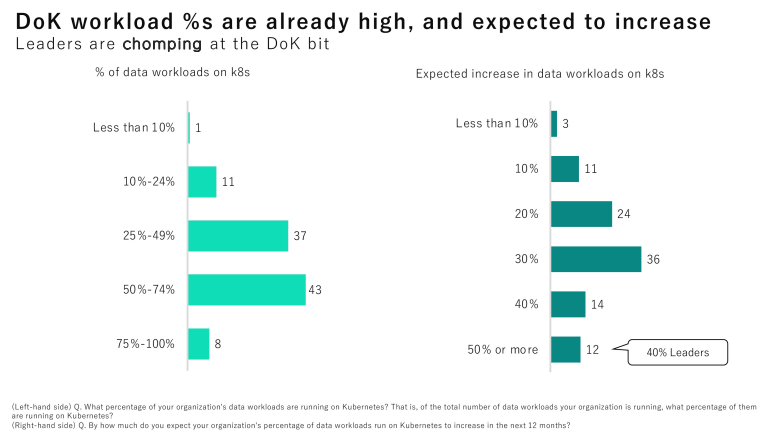
Organizations were found to be running a wide range of data workloads on Kubernetes, including databases (76%), analytics (67%), and AI/ML (50%). The rising adoption rate is attributed to the need to streamline their IT operations by ensuring consistency (43%) and simplifying management (41%).
DoK Benefits All Organizations, Regardless of Tech Maturity
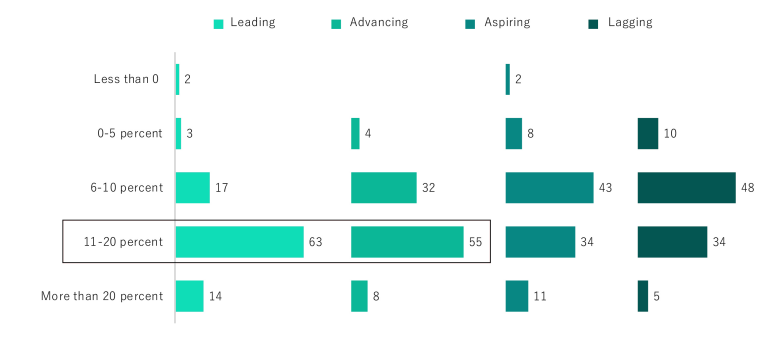
Similar to last year’s report, productivity gains remain a key benefit of DoK. Leading (30%) and Advancing (39%) organizations saw their productivity increase by 2x or more. Productivity gains weren’t limited by tech maturity. Aspiring (39%) and Lagging (35%) organizations experienced 50% or more productivity gains.
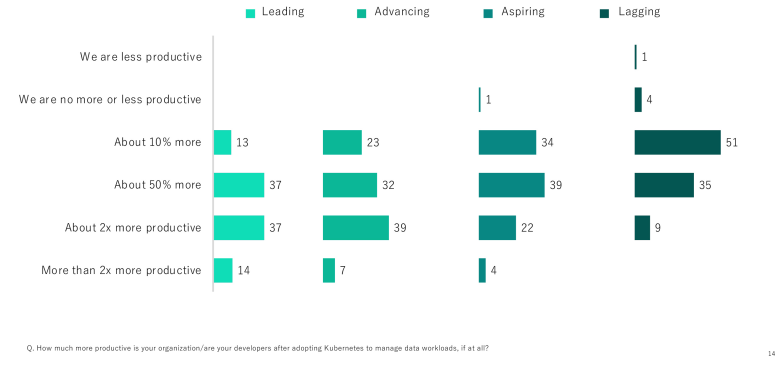
However, the benefits of running data workloads on Kubernetes do not come without challenges.
Day-2 Operations Remain a Significant Challenge
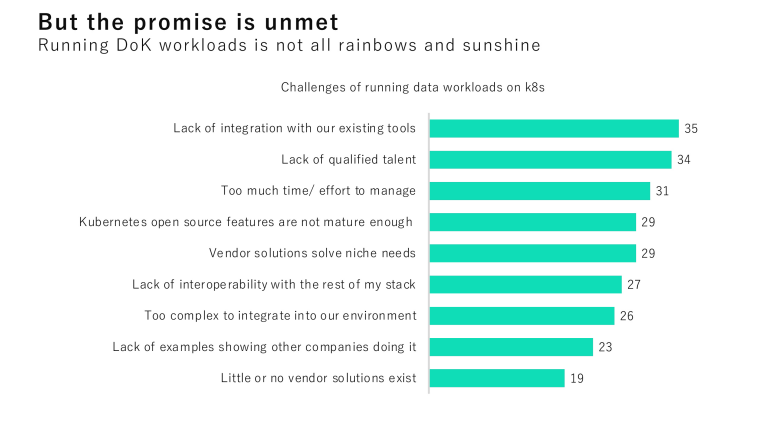
For many organizations, the journey to Day-2 success with Kubernetes is not an easy one. Almost all the surveyed organizations that run data workloads on Kubernetes have run into challenges, most commonly during the development phase. For the second year in a row, organizations (35%) cite a lack of integration with their existing tools as the number-one challenge of running data workloads on Kubernetes. Successful production deployments at scale require a deep understanding of how Kubernetes integrates with existing IT infrastructure.
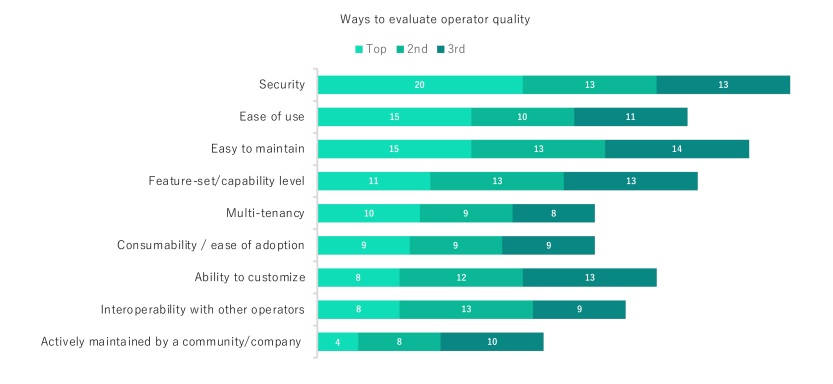
Although technical challenges remain, most organizations don’t have the necessary skills and resources to run data workloads in production. Respondents cite a lack of qualified talent (34%) as the second biggest challenge–up from fourth last year. As workloads move closer to production, 42% of respondents find that it requires too much time and effort to manage them throughout their lifetime, especially as they look to automate provisioning and configuration management.










